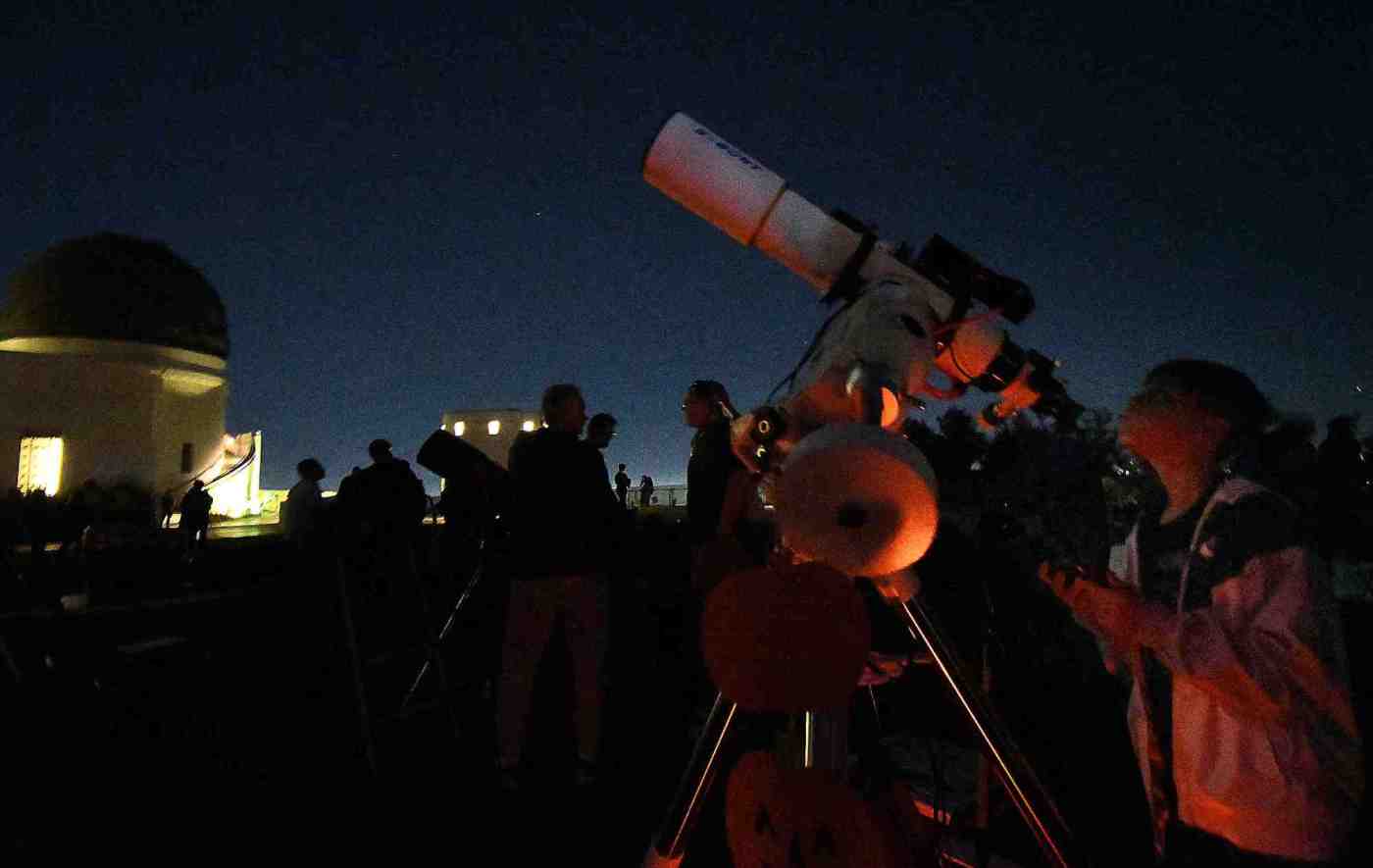Dog days
These hot August nights can be great for stargazing. Here’s a look at what’s going on above us right now and later in the month.
Related Articles
Lawrence Livermore National Lab enters a different kind of space race with a telescope deal
Perseid meteor shower: How and when to watch
James Lovell dies at 97; Apollo 13 moon mission leader turned ‘potential tragedy into a success’
Radar satellite launched by India and NASA will track minuscule changes to Earth’s land and ice
First images unveiled from world’s largest camera, built in the Bay Area
The expression “dog days” refers to the period from July 3 through Aug. 11, when Sirius rises in conjunction with the sun. Sirius means “glowing” in Greek because it is the brightest star visible from Earth and only a few planets, the full moon and the International Space Station outshine it. Sirius is nicknamed the “Dog Star” because it is part of the constellation Canis Major, Latin for “the greater dog.” The actor Keanu Reeves has a band named Dogstar.
In ancient times people felt that the combination of the sun during the day and the star at night was responsible for the extreme heat during midsummer.
Sirius A, is 8.6 light-years from Earth (56 trillion miles), and the fifth closest star system known. For comparison, the star Betelgeuse, in the constellation Orion is the 10th brightest star and has an estimated distance of 400-600 light-years from our sun. The belt in Orion points down to Sirius.
RELATED: Perseid meteor shower: How and when to watch
A light-year is the distance a beam of light travels in a single Earth year, which equates to approximately 6 trillion miles.The five closest stars to Earth (not including our sun) and their distance in light-years are:
Alpha Centauri 2.24-4.37
Barnard’s Star 5.96
Wolf 359 7.78
Lalande 21185 8.29
Sirius 8.58
Some August highlights
Mercury: Pops up above the horizon during the second half of August. Appears very low, below 10 degrees altitude.
Venus: Shines very brightly in the east each morning before sunrise, about 20 to 30 degrees above the horizon.
Mars: Can be observed low in the west during the hour after sunset, appearing about as bright as the brightest stars in the Big Dipper.
Jupiter: Appears in the east each morning, together with Venus, but much less bright.
Saturn: Observable late night to dawn. Rises around 10:30 p.m. early in the month, and around 8:30 p.m. by the end of the month. Find it high in the south as sunrise approaches.
Meteor shower
One of the best annual meteor showers, the Perseids, peaks overnight on Aug. 12th and into the next day. The Perseids typically produce some 60 meteors per hour (or more). But you’ll see only the brightest meteors this year because the moon is nearly full on the peak night, and its glare will wash out all but the brightest meteors. While that’s not so great for Perseid watchers, the good news is that another favorite annual meteor shower, the Geminids, is poised for moon-free viewing in December.
August is a great time to see one of the easiest-to-observe nebulas in the sky. A nebula is a giant cloud of dust and gas in space.The Dumbbell Nebula, also known as M27, is overhead on August nights. Spotted by Charles Messier in 1764, its the first planetary nebula discovered. It’s 1,200 light-years away.
During every 27-day orbit around Earth, the moon reaches both its perigee, about 226,000 miles from Earth (Aug. 14), and its farthest point, or apogee, about 251,000 miles (Aug. 29).
At perigee, tidal ranges are increased but at apogee, they are decreased.
Sources: NASA, Astronomy Magazine, Space.com, Britannica, Farmers Almanac





